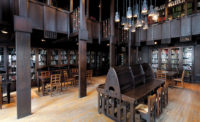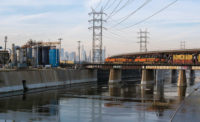The High Line, Manhattan’s elevated rail line-turned-catwalk, gets all the attention, but rails-to-trails projects have been cropping up across the country for decades, and New York City could welcome another soon in Queens. After two years of grassroots organizing, a
new phase for a forgotten branch of the Long Island Railroad may lie around the bend.
In August, the Trust for Public Land (TPL) and Friends of the QueensWay announced that WXY Architecture + Urban Design and DLANDSTUDIO Architecture and Landscape Architecture will spearhead a feasibility study for the development of the QueensWay, a 3.5-mile segment of track to be transformed into a landscaped greenway and cultural hub. “This may be the most unique rails-to-trails project in the country,” says Marc Matsil, New York State director for TPL. “It offers a lot of topographic diversity.”
Passing through six communities, the QueensWay would provide pedestrian and bike paths for the 250,000 residents who surround the site. Over the next 10 months, the architects—who are calling their team WXY + DLAND—will study the site to convert the warped, weed-choked tracks into a vibrant space for public programming and art.
The architects hope to engage quickly with the QueensWay, taking advantage of the surrounding mature trees, glacial moraine, and viaducts for events such as pop-up exhibitions. New York State’s Office of Parks, Recreation, and Historic Preservation and New York Governor Andrew Cuomo’s Regional Economic Development Council put $467,000 toward the feasibility study in December.
The project also received private donations. It seems the road not taken is increasingly the place to tread; the QueensWay will join a growing number of track-renovation projects across the country, like the Bloomingdale Trail, a 2.7-mile-long elevated rail line in Chicago, another TPL project under way. According to Matsil, the organization has helped redevelop 42 railroads: with the High Line’s popularity, these trails are becoming more desirable.
But proponents of the QueensWay want to make it clear that this is not just another High Line. For one thing, it is more than twice as long and has a variegated landscape. Unlike the snails’-pace shuffle of pedestrians along the High Line, the QueensWay will be a trail for biking, running, and hiking. According to its planners, these trails represent more than a trend. “It’s becoming almost a necessity for every city,” says Claire Weisz, principal and founding partner of WXY. “Considering New York City is as big as four or five cities, we could definitely handle more than one.”






Post a comment to this article
Report Abusive Comment